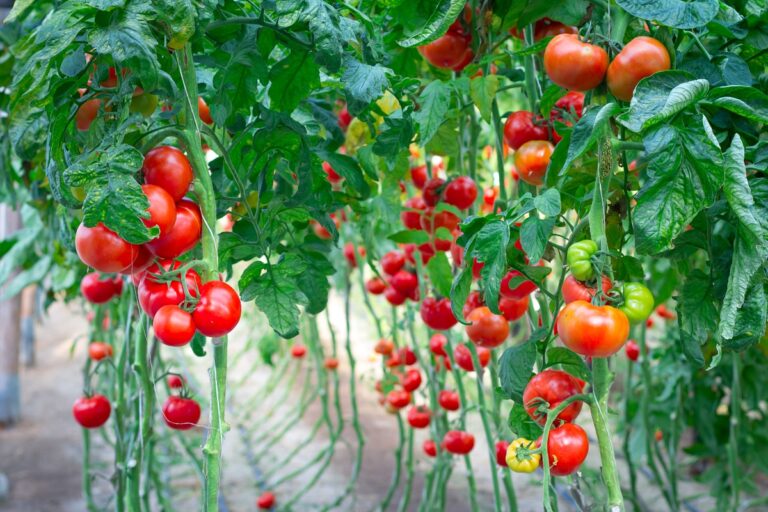Are your rhododendrons looking a bit lackluster? Are their leaves turning yellow or brown? Don’t panic, it’s not too late to save them! One of the most common reasons for rhododendron decline is soil pH. These plants thrive in acidic soils and struggle in alkaline ones.
But don’t worry, there are several easy ways to make the soil acidic for rhododendrons. In this article, we’ll cover five effective methods that will help your plants flourish once again. So, let’s dive in and discover how to give your rhododendrons the soil they crave!
These are five techniques
1. Produce acidic soil that is suitable for cultivating rhododendrons.

Rhododendrons love acidic soil, but if your plants are struggling, it may be due to alkaline soil. Thankfully, there are several ways to make the soil acidic for these beautiful plants. One option is to use sulfur, which is highly effective but can have negative side effects. Another way is to use organic materials such as peat moss or oak leaves.
Ammonium sulfate and ammonium nitrate can also help lower pH levels. Additionally, iron sulfate can be used as an alternative to aluminum sulfate for those who prefer a more natural approach. Before making any changes, it’s important to test your soil’s pH level with a soil test kit and adjust accordingly.
2. Adding nutrients
Once you’ve adjusted the pH level of your soil, it’s important to ensure that your rhododendrons are getting the nutrients they need. Adding a soil amendment or homemade compost can help provide essential nutrients such as nitrogen, phosphorus, and potassium. These can be added to garden soil or plants in pots. It’s important to consider the type of soil you have and its moisture conditions before adding any nutrients.
A gallon of water mixed with a small amount of sulfuric acid can also be used to feed acid-loving plants like rhododendrons. However, it’s important not to over-fertilize as this can lead to root burn or nitrogen toxicity. A soil pH meter and regular soil samples will help you determine when and how much fertilizer is needed for your rhododendrons to thrive.
3. Root weevil
Rhododendrons are not only susceptible to soil pH imbalances but also to root weevils. These pests feed on the roots of rhododendrons and can cause significant damage if left unchecked. Signs of a root weevil infestation include notches in the leaves of the plant and stunted growth. To prevent these pests from damaging your rhododendrons, it’s important to keep the area around the plants clean and free of debris.
Additionally, applying an insecticide specifically designed for root weevils can help keep them at bay. Another method is to release nematodes, which are microscopic worms that prey on root weevils. It’s important to identify and address any pest issues early on to protect your beautiful rhododendron plants.
4. Chlorosis
One of the most common problems faced by rhododendrons is chlorosis, which is characterized by yellowing leaves with green veins. This is usually caused by a lack of iron in the soil, which leads to reduced chlorophyll production and poor plant growth.
To remedy this issue, it’s important to test the soil pH levels and micronutrient content first. If the pH level is too high or alkaline, you can lower it by applying sulfur or ammonium sulfate. Additionally, you can increase the iron content of the soil by adding organic materials like peat moss or oak leaves.
Another alternative to aluminum sulfate for lowering soil pH levels is elemental sulfur or iron sulfate. It’s important to note that these amendments should be applied gradually over time and mixed thoroughly into the soil for the best results.
5. Planting in an elevated garden plot

Planting your rhododendrons in a raised bed can be an effective way to create the ideal soil conditions for these acid-loving plants. By building up the soil level, you can control the pH and moisture content more easily, and ensure that drainage is adequate.
To create a raised bed, start by choosing a location that gets plenty of sunlight and is free from tree roots or other obstructions. Then, build a frame using wood or stone materials, making sure it is at least 8-12 inches deep. Fill the bed with a mixture of garden soil, peat moss, and compost, which will provide good drainage and help maintain proper pH levels.
When planting your rhododendrons in the raised bed, make sure to space them out adequately to allow for growth and air circulation. Keywords: inch of water, square feet, chlorosis of soil, soil for rhododendrons, cooperative extension service, standard soil additive, acidic soil condition, feet of soil, neutral soil, inexpensive soil.
Final thoughts
In conclusion, making the soil acidic for rhododendrons can be achieved by several methods. Using organic materials such as peat moss or oak leaves, as well as elemental sulfur or ammonium sulfate, can help lower the pH levels of your soil. However, it is important to keep in mind that maintaining proper soil moisture is equally crucial for the health and growth of your rhododendrons.
Before applying any soil amendment, it is recommended to test the pH levels of your soil using a soil test kit or pH meter. Additionally, planting your rhododendrons in a raised bed with adequate drainage and optimal soil conditions can also provide an effective solution.
By following these tips and techniques, you can create a thriving environment for your acid-loving plants and enjoy beautiful blooms year after year.






